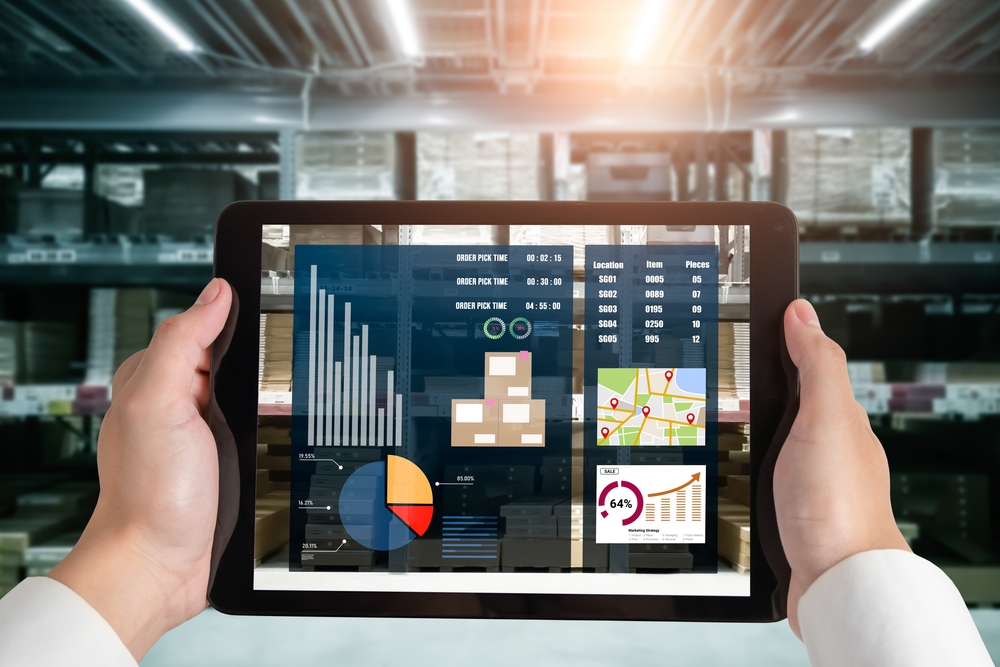
Social data provides valuable insights, but what should I measure when using social media monitoring tools?
This document share insights on the key performance indicators (KPIs), metrices or standards when using social media monitoring, social listening and traditional media monitoring tools. Each metric is defined and assessed for its relevance across marketing, corporate communications, and operational teams.
At the end of this assessment, you will find which metrics are useful when using social listening tools to view your dashboard or when developing your daily, weekly or monthly reports.
Overview
Using social media monitoring or social listening tools often present various challenges for marketing, brand and corporate communications when it comes to tracking on whats important to your business goals or outcomes.
Social listening tools offer many metrices to track, but most are vanity metrices. It can be meaningless or useless in practice.
Yes, not all metrices based on what you view on the social listening tool dashboard are important, accurate nor it represents the truth. Never trust blindly on what data shows you, but it is your task to challenge the accuracy of what being presented.
Remember, metrices are there for you to track, but it only makes sense if it helps you to achieve your business goals.
Now, there are several metrices that are traditionally used to measure the effectiveness of social listening tools such as sentiment accuracy from social conversations, how many share of voice (SOV) that can be captured from social conversations based on a given topic, PR values from your media effort, and many others.
Metrices such as impression (or views) are less important than measuring sentiment from actual conversations of what people say about your brand or a given topic.
In reality, you may not use all the metrices but it is important to understand and identify the importance of each metric to your business objectives (eg: managing consumer or brand sentiment, reducing reputation risks, to assess or gauge the impact of an issue, or perhaps measuring the effectiveness of your marketing campaigns).
What to track or measure from Social Media Listening Tools?
Below we list down key performance metrices or indicators that forms the standard specifications of a social media listening tool. This can be used by end users to track or measure the effectiveness of any media monitoring systems, tools or services in the market today.
Social Media Listening Tool’s Metrices: Specifications and Standards
Often the best social media listening tools and services in the market today are equipped with standard features that allows you to track conversations, analyze sentiment, perform benchmarking and measure marketing performance metrices.
Share of Voice (SOV)
You can measure the percentage of total online/social conversations about a brand compared to competitors. This metric is deemed useful and important for brand owners, marketing and corporate communications.
What to look out for:
- Expect a monthly or quarterly reports rather than a weekly update.
- SOV or benchmarking analysis can only be useful when comparing 1 or more products, or similar brands
Sentiment Analysis
Sentiment analysis forms a crucial feature for brand owners and corporate communications executives, often embedded in the social listening dashboard, but it is reported to be less effective than deep-dive AI-enabled human-verified sentiment analytics offered by data-mining firms and specialists.
Essentially, analyzes whether mentions of your brand are positive, negative, or neutral and this is highly useful when tracking topics that are related to your brand.
What to look out for:
- Error rate from AI-sentiment engine can be as high as 70%, leading to low quality insights when performing sentiment analysis.
- Please ensure sentiment accuracy is high and always choose social listening tool or service provider (agencies) that are able process local dialects, sarcasm and other contextual mixed languages)
Volume of Mentions
The total number of brand or keyword mentions across platforms over a specific time period. This measure is a standard feature that is offered by many social media listening tools or service providers, and should be in presented in your daily or real-time tracking.
What to look out for:
- Low number of data (mentions) due to lack of back-end data support by third party tools.
- Inaccessibility of historical data. Some social listening tools are unable to access historical data (mentions) more than 60 or 90 days, which is deemed unattractive to marketers
Engagement Rate
The level of interaction (likes, comments, shares) relative to the size of the audience. This may be useful for marketing managers who tracking social media campaigns provided the listening tool provide access to brand official Facebook Pages, Twitter, etc.
What to look out for:
- Engagement rate does not mean they will buy the products or agree on the topic or what was posted on social media
- Emojis may be a misleading indicator and may not be an accurate representation or reflection of the consumer sentiment
- Facebook Shares does not mean users or audience are advocates or detractors of your brand
Reach & Impressions
Reach is the number of unique users who saw the content, and Impressions is the total times content was displayed. However, reach and impression are used interchangeably by various social media platforms, but at the end it is a universal measurement of how many times the content was viewed by the audience.
What to look out for:
- Measuring impression may be less important relative to other metrices such as total volume of mentions, or overall sentiment
- You should still have reach and impression as one of many indicators when tracking social media to complement other key metrices. Necessary but not important.
Audience Demographics
Some social media listening tools can breakdown the users who engage the post by age, location, gender, language, and interests. In reality, these metrics are based on estimation due to the stringent data privacy issue set by social media platform owners such as Facebook Twitter, etc in recent years.
What to look out for:
- Use Google Analytics to get a better visibility of your audience demographics, location and interest.
- Social media listening tools that feature location or geo-tracking may not be accurate, and often display very little to no data due to data privacy imposed on service providers.
- Avoid relying on the audience demographics from aggregated data
- Social listening tools are slowly removing this feature and most results displayed are less accurate than pre-2014 (before the data privacy act and enforcement by authorities around the world).
Top Influencers / Amplifiers
Social media listening providers are able to identify detractors, advocates and individuals who are driving the most conversations about your brand. You can measure Key Opinion Leaders (KOLs) or influencers to understand their long term loyalty and how they perceive your brand or about a given topic (or issues).
What to look out for:
- Make sure influencer insights are captured in your weekly or monthly reports
- Identify if these influencers or individuals appear in other topics in the past based on historical trend or social data.
- Find out what motivates these influencers or individuals to post, comment or display such behaviour towards the brand or topic.
Trending Topics & Hashtags
Capturing trending hot topics becomes highly important for communications experts when using social media listening tools which helps them to rank their brand mentions alongside to other trending topics.
What to look out for:
- Use keywords or phrases associated with hot topics based on events or current affairs that are happening in your country or location.
- Be prepared to analyze large amount of social data with high volume of mentions.
- Always subscribe social listening tools that provide unlimited mentions or keywords to allow tracking of a wide range of hot topics, competitor’s topics or industry topics.
Response Rate & Time
Measures how quickly and frequently a brand responds to social inquiries, comments or crisis. In most cases, you can measure your team’s performance in responding to social inquiries, eg say within 30 minutes, responding to a crisis require further deliberation internally. The golden rule is to issue a press statement within 24 hours during a crisis, and corresponding statements must be done every few hours according to the severity of the reputation damage. What to look out for:- There is no automated tracking to measure the response rate, and SLA should be developed to establish a framework within the existing organization structure.
- Response rate is a not a good measure of success, but rather an option to monitor the team’s performance based on daily operations.
Customer Intent Signals
You can use social listening tool to detect purchase interest, complaints, or support requests within posts. In advance applications, social media listening can be used to measure or predict consumer confidence and reputation risks, making it amongst the top performance metrices for experienced communications and PR managers.
What to look out for:
- Focus on relevant keywords during data extraction phase
- Ensure data is cleansed to remove noise
- Focus on long-term trends (3 months and beyond) to get better insights
Media Exposure Quality
Media coverage quality assesses the brand mentions in external media, factoring in source credibility and tone. This complex metric is still its infancy stage, and measures tonality based on headline and content of the body of the article, news or blog posts. Unfortunately, measuring media exposure may bring mixed insights and relevance when assessing impact to the overall reputation risk or PR effort. What to look out for:- Use alternative metrices to replace media exposure such as reach, impression or engagement
- Media coverage quality can also be measured by looking at the user engagement, comments and reaction from those who have actually read it.
Crisis Detection Alerts
Automatic alerts spikes in negative sentiment or mentions occur is one of key features offered by some social listening tools but it may not be useful for you if the negative sentiment output is inaccurate. What to look out for:- Avoid relying on automated crisis alert, but do your check to avoid premature issue escalation
- Always check on the accuracy of the sentiment detection engine (algorithm) to ensure it can process local dialects, sarcasm and other multi-lingual contextual language across various domain or topics.
Social Media Listening Metrices: Which metric is important and what should I track?
We summarize the relevance (measured by importance level) of each social media listening metrices that are useful for marketing managers, corporate communications executives and business operations.
For those using social listening tool to track campaign performance, consumer / public perception, there are few metrices that will help you make better decision or provide better insights when using social media monitoring tools or when partnering with 3rd party service providers.
| Metric | Marketing | Corporate Comms | Operations |
| Share of Voice (SOV) / Benchmarking | ✅ Very Important | ✅ Very Important | ✅ Less Important |
| Sentiment Analysis & Accuracy | ✅ Very Important | ✅ Very Important | ✅ Very Important |
| Volume of Mentions | ✅ Very Important | ✅ Very Important | ✅ Very Important |
| Engagement Rate | ✅ Very Important | ✅ Less Important | ✅ Irrelevant |
| Reach & Impressions | ✅ Important | ✅ Irrelevant | ✅ Irrelevant |
| Audience Demographics | ✅ Very Important | ✅ Important | ✅ Irrelevant |
| Top Influencers | ✅ Very Important | ✅ Very Important | ✅ Less Important |
| Trending Hot-Topics | ✅ Less Important | ✅ Very Important | ✅ Irrelevant |
| Response Rate/Time | ✅ Important | ✅ Less Important | ✅ Irrelevant |
| Customer Intent Signals | ✅ Important | ✅ Important | ✅ Irrelevant |
| Media Exposure Quality / PR Value | ✅ Irrelevant | ✅ Important | ✅ Irrelevant |
| Crisis Detection Alerts | ✅ Important | ✅ Very Important | ✅ Less important |
What is the most important measure in Social Media Listening Tools?
According to corporate communications managers and PR firms, measuring brand or consumer sentiment (from sentiment analytics) is the single most crucial metric in any social media listening tools.
Sentiment analysis trumps all the features of an effective social media listening tool. However, you can’t get actionable insights if it processes the wrong sentiment.
When applied correctly using advance machine learning algorithm, the output of a highly accurate sentiment analysis may help marketing, PR managers, corporate executives and stakeholders to understand consumer trend, preferences and reaction from the existing product, services and other marketing or communications effort.
“Sentiment analytics builds stronger brand loyalty and mitigates future reputation risks associated with incidences or issues that are out of your control” said Shahid Shayaa, CEO of Berkshire Media.
Social Media Monitoring Reports: Custom Report or Automated Dashboard?
Most social media listening tools offer automated performance dashboard and custom reporting (daily, weekly, monthly) to track your metrices, but in reality, custom reports are often preferred by experienced communications managers.
To unlock the best from social monitoring tools, custom reports is relatively the best choice for most advance users as it offers greater flexibility to deep-dive into areas that require further validation or offer greater insights to justify your proposed actions.
Here are pros and cons between different types of social media reporting:
| Social monitoring report attributes | Custom Data-Driven Reports | Automated Dashboard Reports |
| Quality of Insights |
|
|
| Flexibility |
|
|
| Productivity & Efficiency |
|
|
| Effectiveness |
|
|
Custom reporting using analysis outside the social media listening system offers greater flexibility for higher data accuracy, deeper insights from statistical analysis coupled with predictive capabilities that can harness the power of social data. Often custom reports are presented in PowerPoint that can be presented and deliberated, edited or enhanced, and mostly importantly archived for future reference by other departments.
Berskhire Media offers custom reporting capabilities with deep-dive data visualization that offers quality insights with relevant and comprehensive metrices to manage reputation risks
While digital online reporting functionalities from social listening or media monitoring tools are useful, it may not be the best solution for experienced data analysts, or communication managers in large organizations or if you tracking multiple topics or issues at the same time.
Conclusions
Social Media Listening and monitoring tools provide a set of standardized specifications which enable you to track or measure the effectiveness of your marketing, PR and operational efforts.
When picking the relevant metrices that appeal to your business goals and objectives, social listening tools or partnering with social analytics companies may bring the most value to your actionable insights.
At the end of the day, distinguishing important vs vanity metrices from what was offered by social listening tools is crucial to avoid the pitfall of getting into the “analysis paralysis” zone.

About the Author
Shahid Shayaa is the founder and managing director of Berkshire Media. He specializes in data-driven communication strategies and insights using social data analytics, social media monitoring tools and machine learning text algorithms for more than 13 years. As an expert in the field of media monitoring, issue management and managing reputation risks for companies, he is involved in various research studies in this field and published various scientific papers on social data analytics, sentiment analysis and back-end algorithms on consumer sentiment, emotions and behaviour for marketers and campaign managers.
His research work and studies have been cited more than 467 times, inspiring new research in the field of social analytics in Malaysia. You may view his work here.




